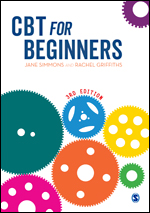CBT for Beginners
Jane Simmons - Practising Clinical Psychologist
Rachel Griffiths - Practising Clinical Psychologist
This book provides the ideal starting point for trainees and practitioners needing a no-nonsense, clear guide to the basics of CBT. It will equip them with the knowledge and know-how, covering all the main theory and competencies to help them practice CBT effectively and confidently.
Focusing on case formulation, the authors show readers how to build a "picture" of each client, using their case history to inform interventions. Features such as exercises, case dialogues, summary boxes, and further reading lists help to enhance and cement learning.
This Third Edition includes updated references, further reading and exercises, and new content on:
- The difficulties and drawbacks of CBT
- The differences between formal CBT and informal CBT
- The therapeutic relationship
- Further discussion of specific formulations
- Compassionate interventions with negative thoughts.
Available formats
See what’s new to this edition by selecting the Features tab on this page. Should you need additional information or have questions regarding the HEOA information provided for this title, including what is new to this edition, please email sageheoa@sagepub.com. Please include your name, contact information, and the name of the title for which you would like more information. For information on the HEOA, please go to http://ed.gov/policy/highered/leg/hea08/index.html.
For assistance with your order: Please email us at textsales@sagepub.com or connect with your SAGE representative.
SAGE
2455 Teller Road
Thousand Oaks, CA 91320
www.sagepub.com

